The environment in which we exist isn't just physical, tactile, nor only to be experienced and navigated visually, rather it continually involves, and continually makes demands upon, all of our senses.
Yet despite the complexity of the environment in which we exist, and the varied and various organs our body provides us with to enable us to employ all our senses in approaching that environment, the vast majority of us consider our other senses, refer to our other senses, use our other organs, a lot less regularly, and a lot less seriously, than we should.
With the showcase The Gallery as a Stage: #1 Sound the Burg Galerie im Volkspark, Halle, invite you to engage with and reflect on the sound of the title.......
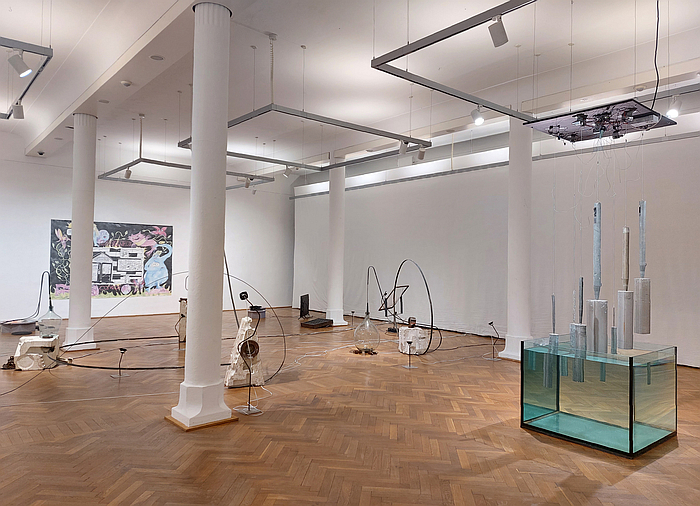
Presenting 16 projects selected by a jury from those submitted by Burg Giebichenstein students of all art and design hues, or perhaps more accurately of all art and design timbres, The Gallery as a Stage: #1 Sound is, as one would expect, very much a showcase of projects and positions to listen to, to engage with aurally, not one to view and to write about.
Yes, you're right, we could therefore have posted a video report, or a sound report, rather than words. And we did consider it. However, on the one hand many of the projects need to be experienced in situ in the Burg Galerie to be meaningfully approached, a quick impression on a video being unhelpful, potentially misleading, and on the other hand while the nuances and experience of the individual projects may be difficult to mediate via the written word, as a collective they do enable varied and various approaches to not only the Sound of the title, but also on and to our relationships with sound.
Not least the myriad questions involved in our personal relationships to and with sound, that way for some a particular sound is pleasing and/or comforting while for others the same sound is abhorrent and unbearable; why one and the same sound can simultaneously be music and noise depending on the receiver.
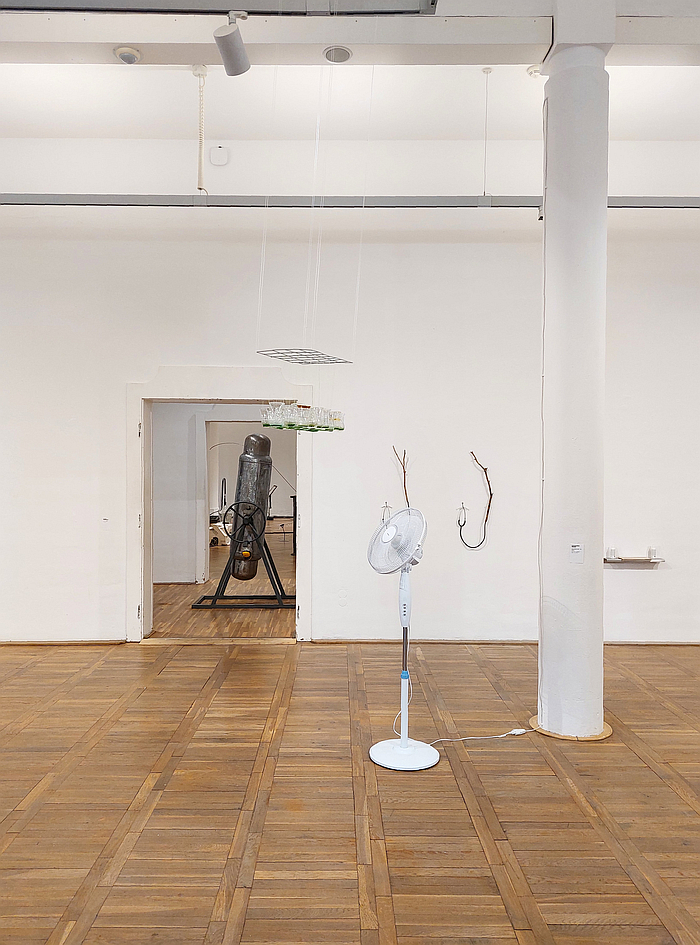
A question more or less ubiquitous in the 16 projects that is particularly present in Axel Orozco Möhl's Ominous Presence, which for some it very much is, for others a joyous delight, being as it is a phenomenally deep frequency that fills the Burg Galerie space; a deep tone that causes, or at least seems to cause, not just the building to shake, but your ribs. A tone, arguably, not as deep as that achieved by Mogwai, or any number of Scandinavian doomsters, but deeper than anything else you'll normally encounter in Halle; and a sound that aside from forcing you to engage with it as it growls around, and within, you, also, through the manner in which it fills the Burg Galerie space, reminds of the omnipresence of sound in our environment. That fact, as noted from Sound Sources. Everything is Music! at the Weltkulturen Museum, Frankfurt, that we all exist permanently in a soundscape, more accurately a number of ever changing soundscapes, as much as in a number of ever changing landscapes.
Ever changing soundscapes which, in contrast to the careful constructions of music, are random compositions, a mix of inputs that by chance exist alongside one another at a particular moment in space and time; a randomness that one can experience during a visit to Sound as inputs reach you from all directions without warning, not least on account of the number of interactive projects. And that is reinforced by the project 59°05’13.3 N 78°59’40.4 E by Luis Kießling in which a number of organ pipes are lowered randomly into a vat of water, producing a light whistling as they move, an ever changing tone depending on which pipes are moving in which direction. A sound that for all it is sonically diametrically juxtaposed to the rib shaking violence of Orozco Möhl's Ominous Presence is, for us, every bit as meditative. And seductive. Although we appreciate others will view both very differently. But why? ¿Why don't you hear what we hear?
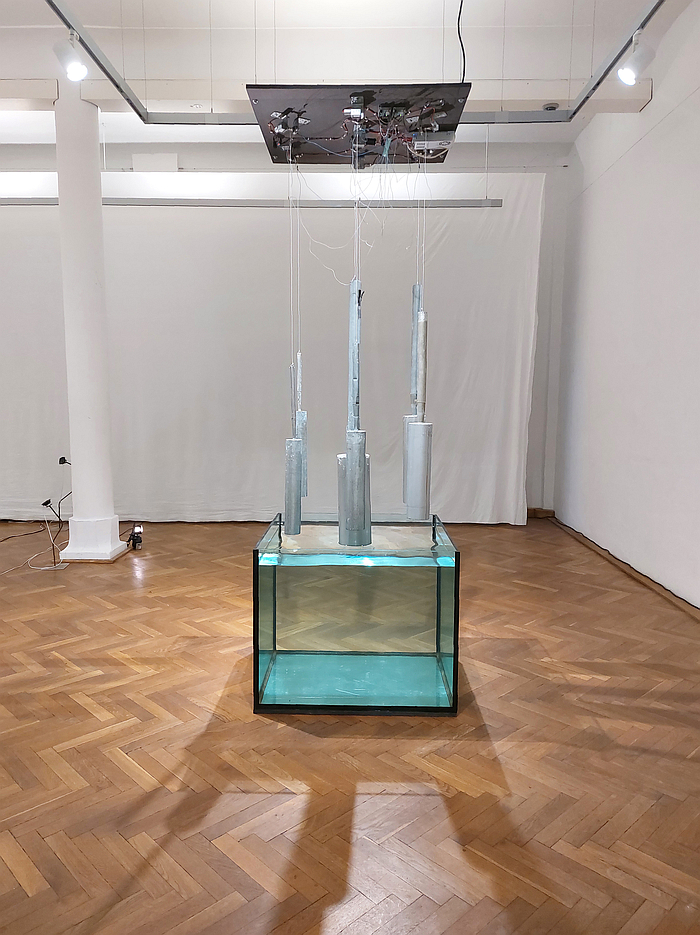
A random composition that we all, collectively and individually, have a direct influence on, our actions contributing directly to both our personal soundscapes and the soundscapes of others; the latter a particular responsibility to our fellow human beings an ever greater number of us are abdicating from in favour of shouting at our earbuds in public spaces. Or foregoing the complexity of earbuds and letting everyone around us share either in both sides of our conversations, a particularly interesting blurring of the boundary between private and public, or in the cacophony of sound-bites generated by either the games we play on our phones or via swiping through a social media feed that has nothing that grasps our attention for more than a quarter-of-a-second: swipeswipeswipeswipead nauseam — The Disposable Heroes Of Hiphoprisy once criticised TV as a "methadone metronome, pumping out a 150 channels 24 hours a day, you can flip through all of them, and still there's nothing worth watching"1, TikTok and Instagram's algorithms, same thing, where's the progress for the human species? Other than we can now take our drugs, and our ignorance, with us?... but we digress... a direct influence we all have that in many regards was at the core of the numerous public sound sculptures developed by a Harry Bertoia, and that is also inherent in Emil Frederking and Luci Schwingen's project By the Way which encourages visitors to 'play' the Burg Galerie as an instrument much as Bertoia wanted us all to 'play' the city. To explore the urban space sonically.
Thoughts on our personal contribution to our individual soundscapes also stimulated by the song WischiWaschi DripDrop by Putzpiepen a.k.a. Emilia Imberger, Lina Marie Bünger & Jack Hilarius Rehse that, or at least in our reading of it, starts with the appreciation that the wishing, washing, dripping, dropping, etc of domestic cleaning generates noises similar to those of (analogue) electronic music, and develops from there reflections on the rituals and conventions of domestic cleanliness, the social compulsion to clean and the gender imbalance in traditional household roles. And all in a garish Aqua-esque cartoon world that sets the dark undertones of domesticity in conversation with the dark undertones of Barbie Girl.
And sounds of cleaning, sounds of wishing, washing, dripping, dropping, etc added to by the brushing of a carpet from Katharina Briksi's Eminönü Pier, part of a trio of Sound Souvenirs, sonic memories of, sonic impressions from, Istanbul that, and amongst other projects on show in Sound, help elucidate that a great many sounds have a personal association, and also an emotional, emotive, character. Positive and negative.
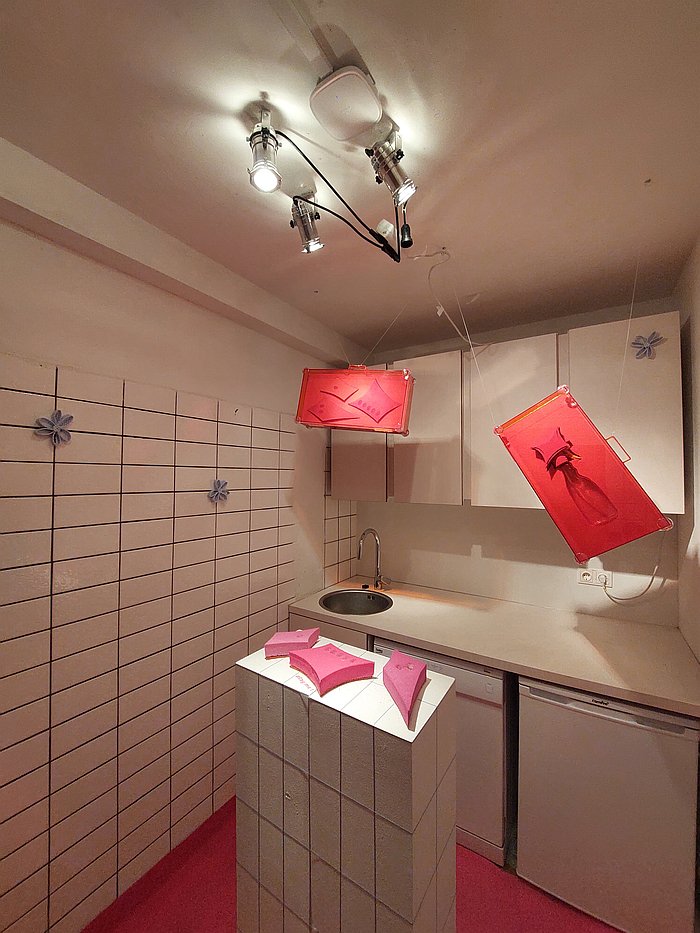
An emotional, emotive, associative, character, positive and negative, that, arguably, makes sound an important component of the definition of 'home' approached by Sandra Knecht in and via Home Is a Foreign Place at Kulturstiftung Basel H. Geiger, Basel: there Knecht included in the installation music that is, was, important and influential for her and invited all to share in it, in Halle the gently jingling tee glasses of Briksi's Seismograph 02 serve the same function. Or at least appear to. But also focus ones attention on the earth-tremors currently afflicting the Turkish capital, that regularly affect that city on the cusp on Europe and Asia, a potent reminder of the force of nature. How many Istanbul homes are currently ringing to the sound of jingling tee glasses moved by the earth rather than moved by the joys of social company? Is the sound of jingling tee glasses a positive or negative association, does it stimulate positive or negative emotions? Is the sound of jingling tee glasses pleasing and comforting or abhorrent and unbearable? Has that answer changed over time?
Thoughts on sound as a component of 'home' also approached via Marina Hilken's installation Lofi_Lights which, in many regards, expands upon Burg Giebichenstein graduate, and smow-Designpreis alumni, Nadja Schulze's position on light as the most important interior design tool, physically and emotionally, through the addition of sound: manipulating the surface of a water bath disrupts the path of a beam of light that passes through it, a disruption of light that is digitally tracked and transposed into sound, thereby enabling a forming of a space, a shaping of a space, through light in conjunction sound. Which again reminds that sound is permanently present in all spaces, is defining in all our spaces. ¿But how regularly do we perceive it?
And a Lofi_Lights project that very much echoes, pun very much intended, the experimental approach to randomised sound generation of a Iannis Xenakis, whose work some consider music. Others noise.
And a Iannis Xenakis who reminds us of the connections between architecture and music.
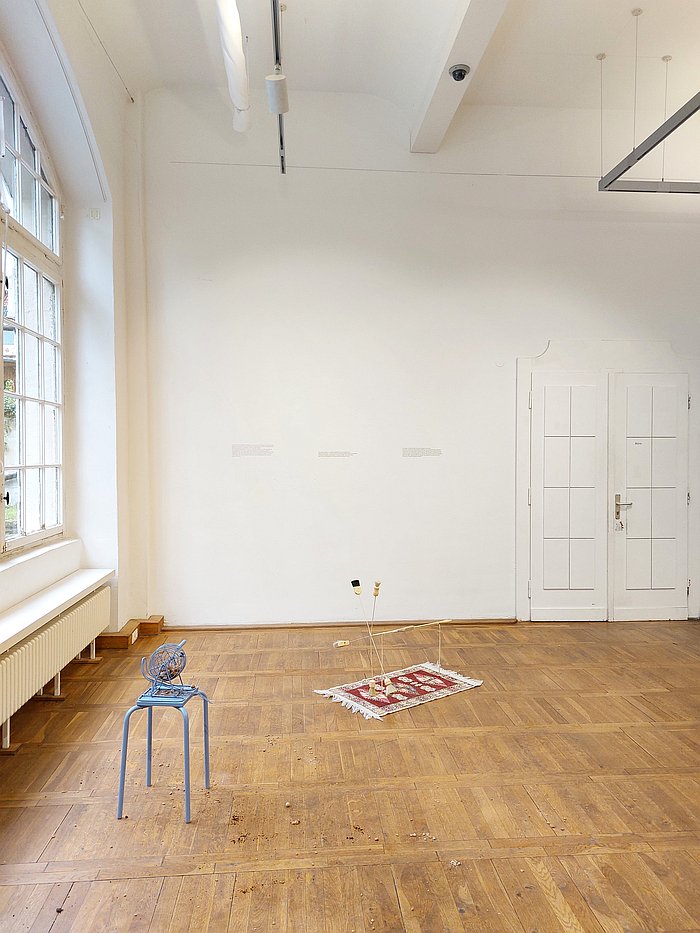
As the title implies, but that we have until now ignored, Sound is the first in a new exhibition programme organised by Burg Galerie as a platform for not only Burg Giebichenstein's students but also by way of exploring galleries as spaces, as stages, for discourse and exchange, whereby in context of the latter Michael Schroller's installation Mosquito particularly stands out.
An installation we didn't hear, couldn't hear, existing as it does between 16 and 18 kilohertz, ultrasound frequencies our ageing ears can't pick up but which the youthful ears of teenagers can. Although they'd really rather not, being as they are the sort of sounds that all class as noise, that all find abhorrent and unbearable, and which generates a physical discomfort in the receiver that enables the use of ultrasound as a tool for discouraging young people from gathering in certain places, allows ultrasound to exist as a form of youth repellent. A youth repellent you can buy and install and employ. Which on the one hand poses questions on sound as a source of power, one also thinks for example of the recent accusations against the Serbian police that they used ultrasound to disperse anti-government protestors in Belgrade, and on the other admonishes we all contribute to discussions on the sounds of our public spaces, admonishes that if sound has power that shouldn't be in the hands of a few individuals.
And also admonishes that architects and designers are actively aware of the sound of their work, actively aware of the consequences of the sound of their work; in his Five Big Ls of Good Design Karl Clauss Dietel demanded that "Leise möchten die Dinge um uns sich verhalten"2, 'the things around us should behave quietly" ¿How would our soundscapes exist today if more architects and designers followed that demand?
Which, yes, does bring us back to to earbuds, or increasingly lack of earbuds, and their contribution to our ever louder public spaces. And also to those egoists who believe that all delight in the selfish noise of their tuned car and motorbike exhausts. If such a noise was physical or visual it would be banned and the perpetrators imprisoned indefinitely. But because it's sound, it's not treated as seriously. Is responded to with a ¯\_(ツ)_/¯
And that, arguably, because we don't treat the soundscapes in which we exist as seriously as we treat the landscapes in which we exist.
Sound allows one to better appreciate why that is an error, helps elucidate why we must be aware of the various soundscapes in which we exist, must listen to the soundscapes in which we exist, must register changes in our soundscapes, appreciate our responsibilities in context of soundscapes, be more sensitive to sounds. Assuming that is you can, Sound also very neatly underscoring the complications bequeathed when you exist in a world without sound, where sound can't be perceived.
But for all Sound allows one to better appreciate the need to approach the world, society, and architecture, urban planning and design, aurally as much as physically and visually. For that is how we are designed to approach the environments in which we exist.
The Gallery as a Stage: #1 Sound is scheduled to run at the Burg Galerie im Volkspark, Schleifweg 8a, 06114 Halle until Sunday May 4th.
More details can be found at www.burg-halle.de/burg-galerie-im-volkspark, including details of all participants, apologies to those we didn't mention. It's no reflection on your project, it's purely a consequence of the idiosyncrasy of our text construction process and very real limitations of space......
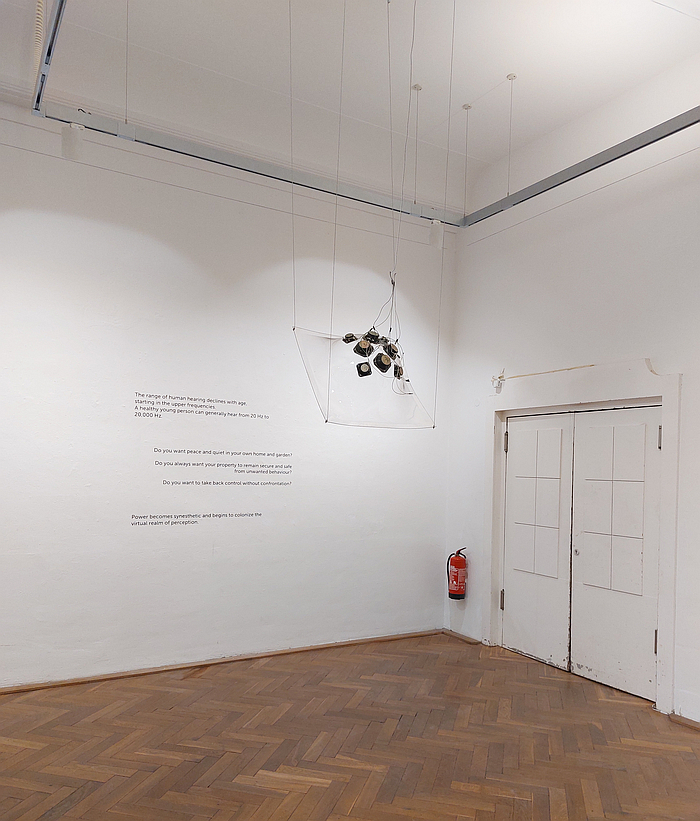
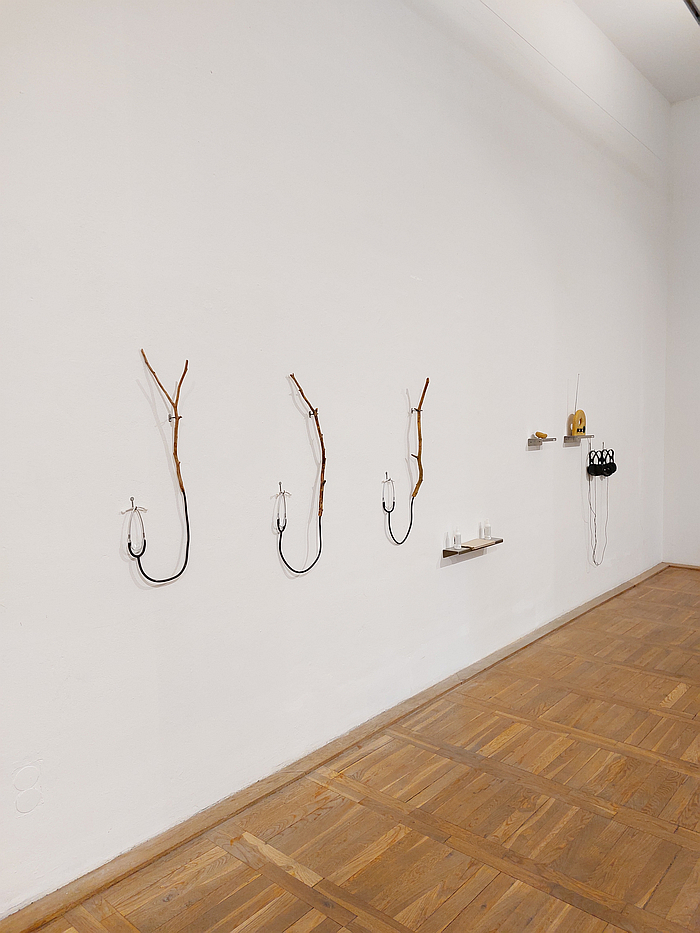
1The Disposable Heroes Of Hiphoprisy, Television, the Drug of the Nation on Hypocrisy Is the Greatest Luxury, 4th & Broadway, BRLP 584, 1992
2see Clauss Dietel, Funktionalismus entstand und lebt nur mit Kunst, Form+Zweck, Vol.14, Nr. 6, 1982 As ever at this juncture, while we believe 100% Dietel believed that objects should be quiet, and worked towards that, his argument would have more weight if his Simson Mokick didn't make a noise that means you can hear one coming three days in advance. While accepting that is an issue caused by the 2 stroke engine, which while not excusing the noise does separate it from doctored exhausts. And reminds that as a modular construction a contemporary electric motor, and thus a leise Mokick, should also be possible.